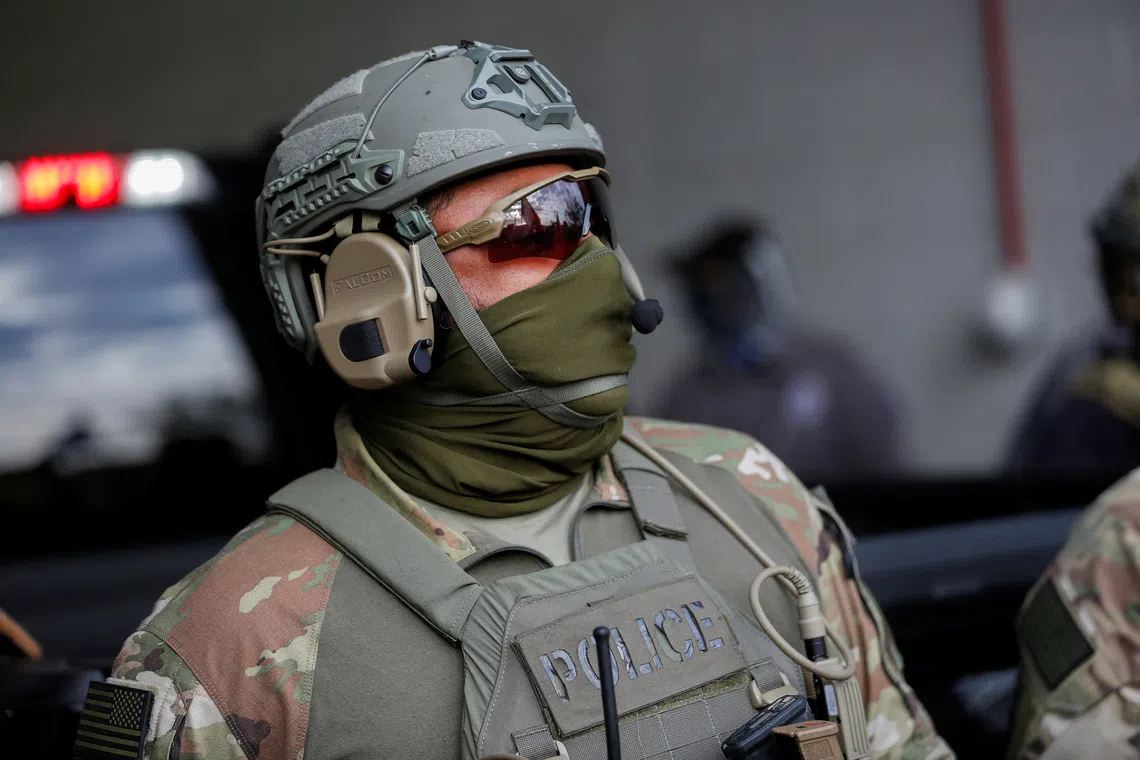Judge orders federal immigration agents to use body cameras in Chicago
Sign up now: Get ST's newsletters delivered to your inbox

The new measure follows a temporary restaining order requiring federal immigration officers to give warning before using anti-riot weapons.
PHOTO: REUTERS
Follow topic:
CHICAGO - A US judge in Chicago on Oct 17 ordered federal law enforcement officers involved in the Trump administration’s immigration crackdown in the city to wear body cameras, citing concerns they were not complying with a previous court order governing their interactions with protesters.
US District Judge Sara Ellis said federal officers trained and equipped with body-worn cameras must turn them on while conducting immigration enforcement activity, including during interactions with the public.
The new measure follows her earlier temporary restraining order requiring federal immigration officers to give warnings before using anti-riot weapons like tear gas and to wear visible identification.
The judge also said she wants representatives from federal immigration agencies to appear at a hearing on Oct 20 to answer her questions about how her order - in effect until Nov 6 - is being implemented.
At a hearing earlier on Oct 16, the judge questioned US Department of Justice attorneys about several incidents in Chicago in which she said federal immigration agents deployed tear gas without warning protesters and journalists nearby as required under an earlier order.
President Donald Trump’s ongoing “Operation Midway Blitz” deportation drive in Chicago has spurred mass arrests across the city and sparked widespread protests.
In response to the protests, Mr Trump sent hundreds of National Guard troops to Illinois
Protesters, journalists, and clergy sued Mr Trump, Attorney-General Pam Bondi, Homeland Security Secretary Kristi Noem and other federal officials earlier in October, alleging they were deliberately targeted and brutalised during demonstrations. The lawsuit seeks a court order declaring the administration’s conduct unconstitutional.
The lawsuit also seeks a court order preventing law enforcement officers from threatening arrest or using riot-control weapons - such as tear gas or rubber bullets - against individuals who do not pose a threat, or unless proper warnings are given.
Judge Ellis entered a 14-day temporary restraining order on Oct 9, agreeing that the groups had put forward evidence that federal law enforcement had retaliated against them.
The order barred federal law enforcement from using force or riot-control weapons against journalists, protesters and clergy unless they pose a threat and required the officers to wear visible identification.
Federal agents have deployed tear gas and pepper balls against residents in several high-profile incidents in the Chicago area in recent weeks, as well as firing their weapons in one incident in September that left a Mexican national dead.
State and city officials are challenging the Trump administration in court
In response to a lawsuit brought by Illinois Attorney-General Kwame Raoul, another US judge has entered a temporary restraining order barring the deployment of the troops that was bolstered by an appeals court on Oct 16. REUTERS

